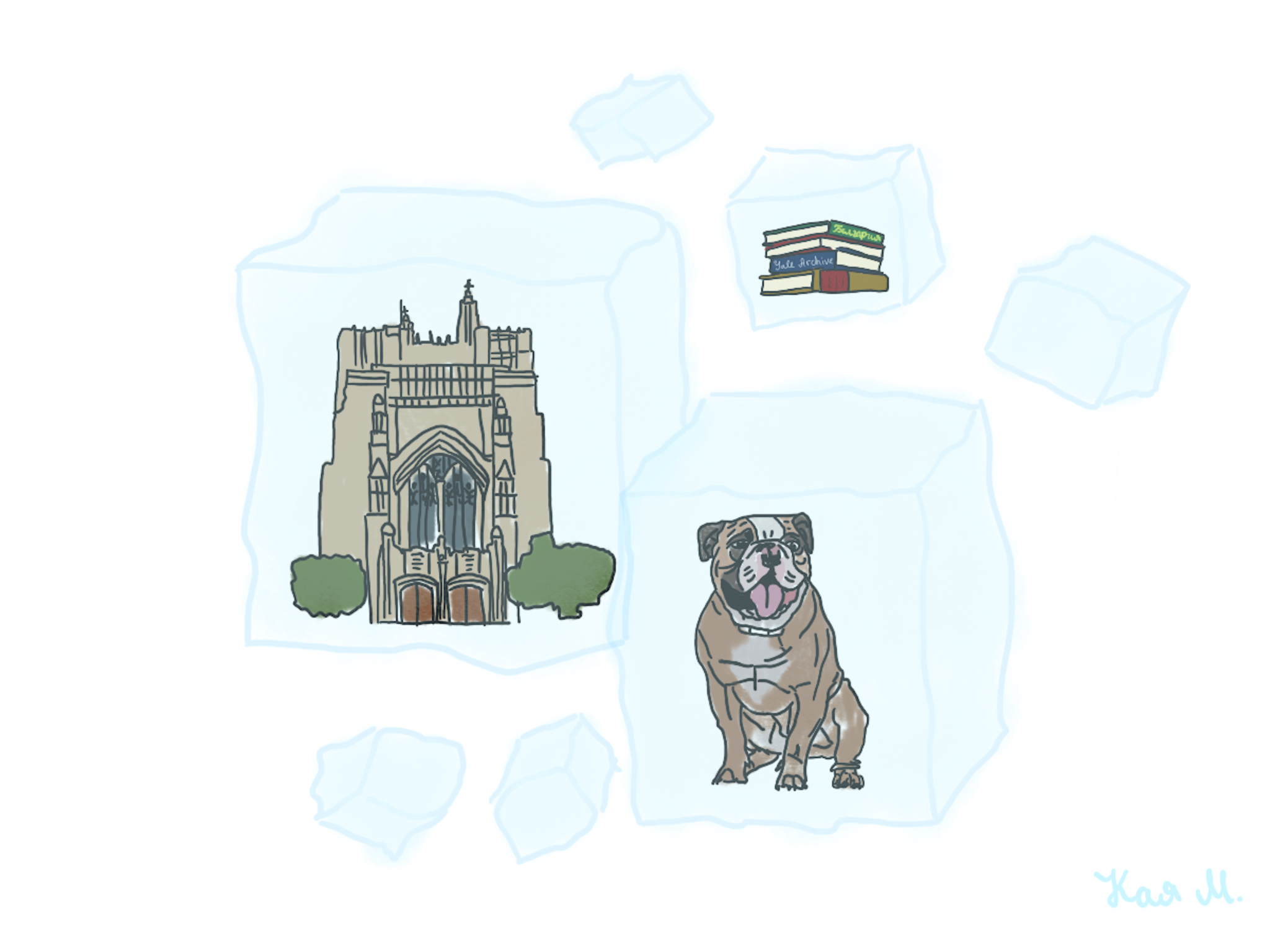Yale Library donates software collection to the Arctic World Archive project
Yale Library’s digital contribution will be preserved in Svalbard, Norway, as part of a project to protect the world’s software programs

Kaia Mladenova, Staff Illustrator
Deep in the bowels of a Svalbard coal mine, the Arctic World Archives has added a suite of digital programs from Yale Library to its growing collection.
Yale Library’s software donation — which includes Microsoft Office and Adobe Suite — is one of the latest to join the AWA. The donation’s journey, from CD-ROM to storage vault, was the result of a collaboration between the library’s Emulation-as-a-Service Infrastructure, or EaaSI, program and the Norwegian data service company Piql.
“This project is … a one-of-a-kind thing that we’ve done,” Seth Anderson, EaaSI program manager at Yale Library, said.
AWA was founded in 2017 by Piql to preserve digital applications, software and data files in danger of obsolescence or physical destruction. The EaaSI program at Yale Library, which has the goal of increasing access to emulation technology both within and beyond Yale, helped facilitate the contribution.
As part of AWA, contributions from institutions around the world are translated into bits — binary ones and zeroes — onto a special Piql film, where they are stored in a former coal mine under carefully controlled conditions.
“We have developed this [Piql] film for many years and really improved this,” said Katrine Loen, deputy managing director of Piql and the person responsible for bringing Yale Library’s collections into the vault.
The Piql film, coated with silver halide, contains eight million data points per frame and can resist stretching, hackers and nuclear radiation, making it an ideal medium for AWA contributions. The films “can last for 1000 years,” according to Loen.
Finished Piql films are then placed 300 meters underground in one of Svalbard’s former coal mines, just 600 miles away from the North Pole. Svalbard was established as part of a demilitarized zone under Norwegian sovereignty as part of the 1920 Svalbard Treaty.
“It’s exciting to be included alongside … monumental projects related to the preservation of the world’s cultural heritage,” Anderson said.
Among the archive’s growing collections include all of GitHub’s services, manuscripts from the Vatican library and a full scan of the Taj Mahal.
Loen noted that in this age, there is a need to preserve large quantities of information. She also emphasized that just as much information could be lost through the threat of technological obsolescence. As storage mediums phase out, users have to transfer their data in order onto interfaces, which results in slight changes to the data with each migration. What happens, then, is that “what is stored 100 years back is not the same data as you get in 100 years,” said Loen.
“This is a huge problem for digital collections, and collectively for research, scholarship, and science: how do we maintain public access to legacy digital content that really needs its original computing environment to function properly […] ?” Ethan Gates, EaaSI software preservation analyst at Yale Library, wrote to the News.
With software and devices growing obsolete, certain digital products often get lost in the process of technological advancement, which can complicate the process of preserving information for future generations.
“We would like to keep important information for mankind,” Loen said
Since every Piql film contains the object’s source code and file format in readable human text, anyone in the future will be able access them with just a computer, light source and camera. The archive’s 3D scans of “The Scream” by Edvard Munch, for instance, would allow future users to faithfully distinguish among online images to find the original work.
Both Piql and the EaaSI program have plans to continue their work of democratizing information.
Loen told the News of Piql’s efforts to deprivatize and “offer our services to public institutions.” The group is working on becoming a foundation, which will ensure that the project remains under the protection of the Norwegian government and accessible for all.
Because “not all institutions have the money to store the data,” Piql is working to open options for free storage because “important information [is not] always comparable to how much money you have,” Loen said.
As for the EaaSI program, Anderson explained that the initiative hopes to expand its reaches beyond Yale and “turn the system into a service we can offer to other institutions.” He hopes that EaaSI’s work might enable other organizations to initiate similar projects and “[ensure] accessibility of information for the future.”
“We work with a number of other universities and libraries in the U.S., and beyond, to help them use the platform and explore emulation with their collections as well,” Gates wrote.
According to Gates, EaaSI is currently copying data off the “thousands of CD-ROMs in the Library’s collections.” Databases, educational software and digital artwork — even the entirety of the 2004 Windows software, for instance — are being preserved through “emulation environments,” which run antiquated software modern systems might not be able to run, explained Anderson, which are available in the library’s LibGuide and open to anyone with a Yale CAS.
“What’s exciting to me about EaaSI is introducing these tools to new people and places,” Gates wrote.
Gates further noted the nostalgia that users have experienced when they engage with a game or program they had thought was lost, describing it as “having a time machine.” Thus, it is no surprise that the EaSI program was eager to contribute to AWA.
“We are so honored to have Yale University library as a client,” Loen said. “It means a lot to us, and it shows that the university and library is really […] innovative.”
The data stored at AWA is expected to last at least 500 years.







